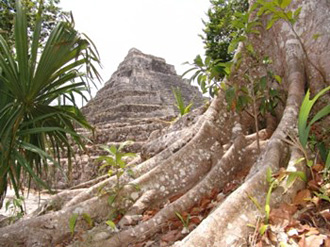
|  |  |  News Around the Republic of Mexico | April 2009 News Around the Republic of Mexico | April 2009  
Archaeologists Begin Recovery of Ancient Mayan City in Mexico
 ANI ANI
go to original


| | Previous archaeological digs in Ichkabal indicated the existence at this site of a vast Mayan settlement comprising many buildings, of which the biggest is some 200 meters (656 feet) wide at the base and 46 meters (151 feet) high. |  |
Mexico City - Mexican archaeologists have begun the recovery of a great Mayan city buried under tons of earth and jungle in the archaeological area of Ichkabal on the Yucatan peninsula.

According to a report in the Latin American Herald Tribune, previous archaeological digs in Ichkabal indicated the existence at this site of a vast Mayan settlement comprising many buildings, of which the biggest is some 200 meters (656 feet) wide at the base and 46 meters (151 feet) high.

"This is a city whose construction began in preclassic times, 250 years before Christ," according to the National Anthropology and History Institute (INAH).

The director of the INAH center in Quintana Roo state, Adriana Velazquez, said that while no architectural details are visible on the surface and all that can be seen are mounds covered by "the exuberant vegetation" of the area, their characteristics seem to indicate Peten-style constructions.

The specialist said that everything suggests that hidden here under the ground, the trees and jungle growth is a city covering about 30 square kilometers (11 1/2 square miles) whose study will add important archaeological information to what we know about the ancient Maya civilization.

"The site was undoubtedly the seat of an important political establishment, since in early cities rulers always attempted to validate their power with great construction projects, such as those detected here," said Velazquez.

The site was discovered in 1995 by a local inhabitant, who revealed the existence of pre-Colombian vestiges to archaeologists Luz Evelia Campana and Javier Lopez Camacho, who then toured the southern part of the state to take note of those remains.

A team of archaeologists is currently excavating two of the chief structures and the work is expected to be expanded to include minor structures in order to observe the city's development and the function of the different buildings.

The authorities said that access to the excavations is currently restricted, although in two years, the site is expected to be opened to tourism, once the first stage of the work of recovery and restoration has been concluded. |

 |
|  |



